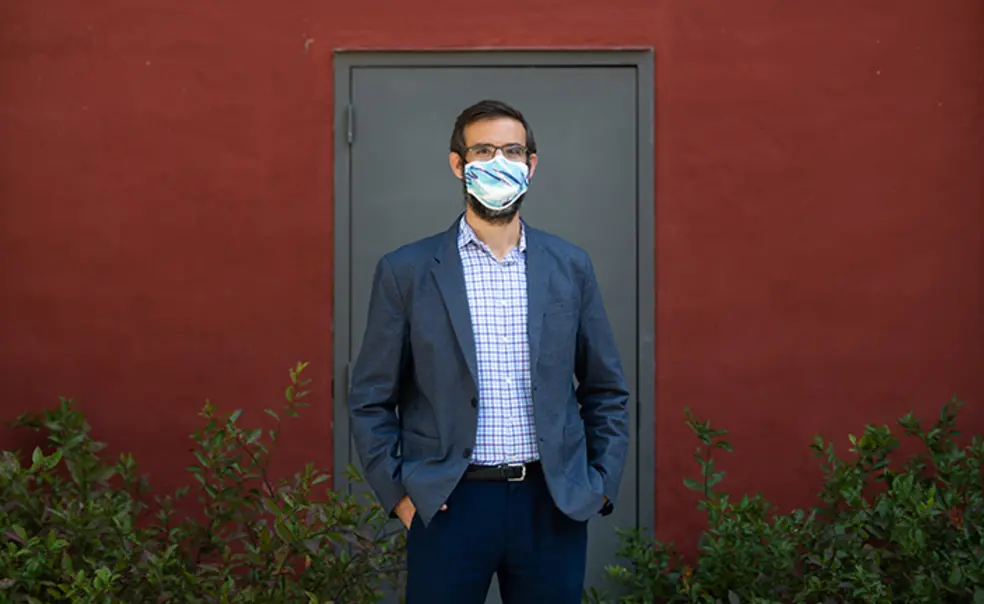Joshua Weitz ’97 Is Mapping the Risk of COVID-19
The user-friendly tool helps people make informed decisions about social interactions
Joshua Weitz ’97 knows viruses. As the Patton Distinguished Professor of Biological Sciences at the Georgia Institute of Technology, he uses quantitative methods to study how these minuscule bits of genetic material impact everything from cells to ecosystems. When COVID-19 emerged as a major threat in the United States early this year, Weitz immediately worried that the public’s failure to understand how viruses spread could have catastrophic consequences. His concern compelled him to design the COVID-19 Risk Assessment Planning Tool, an interactive, real-time map that visualizes the risk of encountering someone infected with COVID-19 in every U.S. county.
In early March, Weitz hypothesized that asymptomatic transmission could have a disproportionate effect on the spread of COVID-19, especially since face masks had not yet been widely adopted in the U.S. He created a statistical model to describe why large social gatherings posed a particular risk. Weitz explained that if one out of 1,000 people were infected, once you get 1,000 people together, “the odds that none of them have COVID-19 gets very low, and the chance that one or more has it gets high and rapidly approaches … 100 percent.” On March 10, he posted a chart illustrating this concept on Twitter and urged people to practice social distancing.
As the virus continued to spread, Weitz recognized the need for a user-friendly tool to help people make informed decisions about social interactions. Working with colleagues, he debuted the map in early July and was surprised by how quickly its audience grew. At first, unexpectedly high traffic — more than 200,000 visitors per day — caused the site to crash repeatedly.
The map is updated daily and draws on county- and state-wide case reports (aggregated by The New York Times and The Atlantic, respectively) and adds an “ascertainment bias” to account for the fact that many cases are probably unreported or unknown. Weitz launched the map with a default ascertainment bias of 10, assuming that case numbers were 10 times higher than recorded. He has since switched the default to 5, as testing has become more widely available. A moveable slider lets users track how the risk of encountering an infected individual grows as group size increases. As of Nov. 23, if you were to attend an event with 10 people in New York City, the map predicts (using an ascertainment bias of 5) that you would have a 10 percent risk of encountering someone infected with COVID-19. For an event with 50 people, the risk rises to 40 percent; for 100 people, 64 percent; and for 500 people, 99 percent.
Weitz and his colleagues published a paper on their work in Nature Human Behaviour in early November. They have expanded the map to include data from several European countries, and plan to add more countries. Meanwhile, as rates of infection continue to flare across the United States, Weitz says the site has attracted 7 million visitors since its launch. To Weitz, the popularity of the site suggests a major opportunity for governments to improve the way they communicate with their constituents. “My hope is that … [a tool like this] becomes part of an improved, rapid, and localized public-health response that [is] institutionalized at the state and federal levels,” he says.












No responses yet